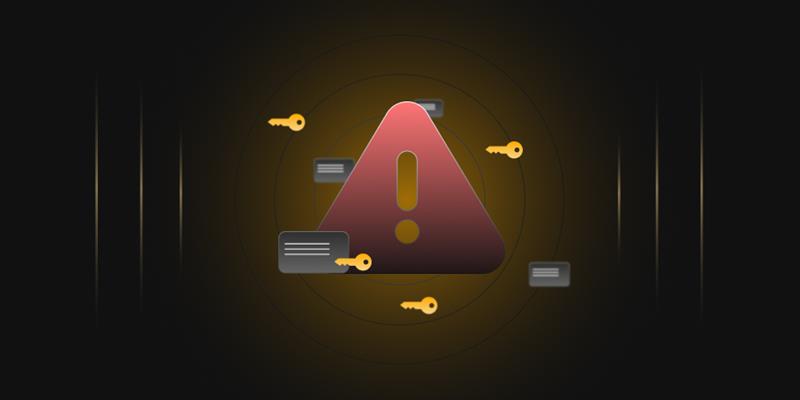- Key Areas of PKI Health Check
- Ways to do PKI Health Check
- Evaluating PKI Policies and Procedures
- Key Areas to Evaluate
- Technical health check
- Identifying and Mitigating Risks
- Key Risk Areas in PKI
- Monitoring PKI infrastructure
- Auditing
- Objectives of a PKI Audit
- Best practices
- How can Encryption Consulting help?
- Conclusion
PKI health check is a thorough review of your current Public Key Infrastructure (PKI) to ensure it is working properly, securely, and efficiently. It helps in discovering areas that need to be improved and vulnerabilities and inefficiencies that may exist thereby making sure your PKI aligns with the present-day security requirements and best practices.
Key Areas of PKI Health Check
-
Review of Architecture
We should review all the architecture and designs to ensure that they are strong and efficient. We should also check for faults or redundancies and ascertain high availability to maintain seamless operations.
-
Certification Policies & Procedures
We should thoroughly examine certification policies and procedures to verify if they are strong enough. Furthermore, check certificate issuance, renewal, and revocation processes.
-
Security Assessments
We should ensure that the credibility of the PKI is checked by conducting security assessments on different PKI components such as CAs, RAs, and HSMs. This process involves scanning systems for vulnerabilities and applying necessary patches to sustain the security posture.
-
Certificate Management
To ensure PKI security and dependability, effective certificate management must be achieved. Therefore, there is a need for a complete inventory of certificates with periodic checks to ensure their status and completeness. This prevents unauthorized access while protecting the identity of the PKI.
-
Operational Procedures
Assessing the effectiveness of operational procedures and incident response plans is important for clarity and effectiveness. The importance of regular testing, backup, and disaster recovery plans cannot be overstated; this ensures that operations can be restored swiftly if there is an outage or other major failure. Additionally, keeping staff abreast with necessary PKI management knowledge, as well as training them in related skills, will always guarantee smooth operation flows.
-
Compliance and Auditing
Complying with legal requirements like HIPAA and GDPR is significant for the PKI’s legal and regulatory status. Regular examination of the internal controls that guarantee compliance with these standards is essential. The audits help identify opportunities for more improvements so that PKI operations remain compliant and secure.
Ways to do PKI Health Check
-
Preparation
Preparation starts by defining the scope and aim of the PKI health check so that a focused and effective evaluation is ensured. This entails collecting all necessary papers and details about the current PKI installation. It is also important to identify the main stakeholders or staff who are involved in running the organization’s PKI for an inclusive assessment.
-
Assessment
In this stage, inputs from stakeholders through interviews are collected to appreciate their perspectives and concerns. For instance, individual components and processes within the PKI can be examined in detail to identify any issues or inefficiencies. In addition, tools and scripts can be used in automating some parts of the assessment process hence improving accuracy as well as efficiency.
-
Analysis
Upon reaching the analysis phase, findings from assessments will be reviewed. Consequently, strength areas such as performance excellence can be identified, while weaknesses like system failures are pinpointed in this step. Risk-based prioritization helps to select items for remediation activities.
-
Reporting
It is important to write an inclusive report of all findings to document the outcomes of the assessment. This report should also have recommendations for rectifying each identified problem. When the stakeholders are given this report, they will discuss what to do next and hence every other person will be on board.
-
Remediation
To remediate means taking measures aimed at implementing recommended corrections for stated mistakes. Any changes made must be tested first. The concerned documents and procedures should, therefore, be updated accordingly with these alterations and developments.
-
Continuous Monitoring
A regular schedule for checking PKI’s health is necessary in order to keep it secure and efficient. In addition, continuous monitoring of PKI infrastructure helps in early detection and mitigation of any new problems that may occur within it. Besides, keeping up with current security trends and best practices ensures that PKI is strong enough against threats.
Evaluating PKI Policies and Procedures
One of the most important things when it comes to Public Key Infrastructure (PKI) is assessing its policies and procedures to see if they are effective and meet the set security and compliance standards.
Key Areas to Evaluate
-
Certificate Policy (CP)
A Certificate Policy (CP) is a document that specifies how certificates should be used. Evaluating CP requires one to analyze its clarity and completeness, as well as ensuring it complies with industry norms like RFC 3647, among others. Certificates should have clear-cut job descriptions for each type, i.e., end-user, CA, subordinates, etc.
-
Certification Practice Statement (CPS)
Certification Practice Statement (CPS) is an exhaustive document providing more details about how certificate policy is implemented by the Certification Authority (CA). When assessing CPS, determine whether it aligns with Certificate Policy. The process of issuing, managing, and revoking certificates as well as the security controls and measures required in case some security breach happens, should be outlined. Additionally, incident response and recovery processes should be included in this statement.
-
Certificate Issuance Process
The assessment of issuing procedures includes an examination of verification methods for certificate requestors, approval workflows, and record-keeping practices. Evaluating the security measures put in place during certificate generation and distribution and a balance between automated and manual steps in issuing process is necessary.
-
Processes for Renewing and Revoking Certificates
Some of the evaluation criteria for certificate renewal and revocation are the performance of automated or manual ways of renewal, timely notification and handling of expired certificates. Evaluate the effectiveness and security of revocation procedures and document certificate revocation reasons.
-
Practices in Key Management
To evaluate practices in key management, it is important to look at how keys are created, stored, and distributed. Evaluating key backup and recovery methods, regular replacement of keys and policy regarding key expiry is also necessary. Adequate attention should be paid to private key handling and protection.
-
Audits And Monitoring
Regular internal as well as external auditing is critical for continuous monitoring of compliance issues and security incidents within an organization or network. In addition, having incident logging and reporting mechanisms that will facilitate easy follow-up by auditors on audit findings or during security-related incidents.
-
Compliance and Legal Considerations
It is necessary to comply with legal requirements pertaining to PKI policies, such as, GDPR and HIPAA. It should be ensured that the policies are appropriately put down in black and white and enforceable through law. Responsibilities and liabilities must be clearly defined.
-
User Training and Awareness
Finally, assess training programs for PKI operational staff members as well as awareness campaigns targeted towards end-users and stakeholders. The incorporation of regular updates and refresher training regarding PKI routines is a key requirement for its effective functioning within a secure environment.
Technical health check
Carrying out a technical health check for PKI implies evaluating the technical components and configurations for secure and efficient operation.
Areas of Focus
-
Certificate Authorities (CAs)
Determine the proper configuration and security of the Root and Intermediate CAs. For example, use Hardware Security Modules (HSMs) to ensure secure storage and access control for CA private keys. Examine failover mechanisms, if any, and their redundancy, as well as ensure patch management with updates.
-
Registration Authorities (RAs)
Ensure RA’s identity verification processes and certificate issuance procedures are secure and efficient. There should be adequate training provided to RA personnel, and role-based access controls should be implemented. Detailed logging and consistent RA monitoring are critical.
-
Certificate Lifecycle Management
The processes for certificate issuance, renewal, and revocation should be automated. There should be timely notifications about expiring certificates, clear procedures for key rollover or transition during maintenance procedures, and efficient inventory management of certificates that facilitate the timely identification of expired certificates.
-
Key Management
Evaluate the secure generation, storage, distribution, and destruction of cryptographic keys and ensure that they are rotated frequently. Adequate backup and recovery mechanisms for cryptographic keys and protections for private keys, like the use of HSMs, should be implemented.
-
Infrastructure Security
Assess network security measures, including firewalls, intrusion detection /prevention systems (IDS/IPS), and secure communication protocols like TLS. Ensure physical security controls for data centres and hardware components, regular vulnerability assessments, and penetration testing. Also, all PKI-related activities must be continually monitored and logged.
-
System Performance and Availability
Monitor performance metrics, such as load balancing and scalability, of PKI components. Ensure redundancy, disaster recovery planning, and service level agreements (SLAs) for PKI services.
-
Interoperability and Integration
Ensure compatibility with different applications/systems such as email clients, VPNs, or web servers. Incorporate standard protocols/formats like X.509, OCSP, or CRL. Also, ensure through testing and validation of interoperability.
Identifying and Mitigating Risks
To maintain security and reliability, it is critical to identify and mitigate the risks associated with a Public Key Infrastructure (PKI) system. Security breaches and operational issues can be prevented by effective monitoring and proactive measures.
Key Risk Areas in PKI
-
Key Compromise
This has significant consequences as it allows unauthorized persons to use private keys, resulting in data breaches or loss of trust. Moreover, these keys might be compromised, leading to the issuance of counterfeit certificates. In order to avoid such risks, secure key storage should involve the use of Hardware Security Modules (HSMs), strict access controls and multi-factor authentication (MFA), frequent rotation or retirement of old keys, and checking for abnormal activities.
-
Certificate Mismanagement
Expired or invalid certificates may impact service delivery while eroding trust. Therefore, automation of certificate issuance processes, renewing procedures, and revocation becomes important. In addition to maintaining an updated list of all certificates issued, a strong certificate lifecycle management solution able to audit and review its policy in regard to the aforementioned practice on a regular basis becomes essential.
-
Operational Breakdowns
Operational breakdowns like hardware or software failure could result in system downtime and data loss. Poorly designed disaster recovery strategies can prolong downtimes. To safeguard against such risks, it is important to ensure that redundancy and failover mechanisms are put in place, backup and disaster recovery plans are regularly tested, system performance is monitored, and regular upgrading of software and hardware to the current patches is ensured.
-
Security Breaches
Malfunctions in PKI systems associated with unauthorized access or intrusion from malware and other cyber threats may lead to security breaches. To prevent them, strong network security measures like firewalls and IDS/IPS should be implemented, vulnerability assessments and penetration testing should be done regularly, and encryption should be used for sensitive information protection.
-
Compliance and legal risk
Non-compliance with regulations can lead to legal sanctions and loss of trust, while failure to meet industry standards may affect interoperability and security. To reduce these risks, organizations should be aware of relevant regulations such as the GDPR or HIPAA, conduct regular compliance audits, maintain comprehensive PKI policy and practice documentation, and ensure that all components and processes adhere to best practices.
Monitoring PKI infrastructure
-
Real-time monitoring
Deploy real-time monitoring tools for tracking PKI components’ health and status. Create alerts for important incidents like key compromise or certificate expiration; build summary displays showing main performance indicators and tendencies.
-
Constant Inspections and Evaluations
Have regular internal and external audits of your PKI network, as well as conduct risk assessments from time to time to discover new or fresh threats that might evolve. Go through the audit logs and reports, which will ensure that you are conforming to rules and regulations and give you a way forward.
-
Incident Response
Set up an incident response plan for any security incidents related to your PKI and keep it updated at all times. Also, staff should be oriented on how they can respond during such incidents. The organization must also determine if their response plan is effective.
-
Continuous Improvement
Keep up with the latest security trends, vulnerabilities, and best practices. Incorporate feedforward mechanisms to learn from previous events for process improvements. Interact with other members of the public key infrastructure community by exchanging knowledge about this technology to broaden individual intellects.
Auditing
To audit your Public Key Infrastructure (PKI) is an important step in making it secure, compliant and efficient in operation. This will help you to know its drawbacks as well as areas that need improvement.
Objectives of a PKI Audit
-
Security Assurance
One of the main purposes of a PKI audit is to validate the implementation of security controls. This includes detecting and remediating potential vulnerabilities and ensuring the integrity and confidentiality of cryptographic keys and certificates. Proper security assessment ensures the trustworthiness and reliability of the PKI infrastructure.
-
Compliance
Compliance involves meeting regulatory requirements and industry standards such as HIPAA, GDPR, PCI DSS, etc. Being compliant helps to avoid legal penalties while upholding the organization’s image.
-
Operational efficiency
PKI audits help examine the effectiveness and efficiency of PKI processes. The purpose is to find areas for improvement and optimization and ensure appropriate lifecycle management for keys and certificates. By improving operational efficiency, institutions can save costs and increase service reliability.
-
Risk management
Proper risk management must be achieved by identifying and dealing with potential risks. This will entail ensuring proper incident response and disaster recovery planning measures and proper implementation of effective risk management strategies. Good risk management safeguards the PKI infrastructure from attacks and ensures business continuity is always met.
Best practices
It is very important to maintain the health of your Public Key Infrastructure (PKI) to ensure its safety, dependability, and efficiency. Here are some best practices to help you maintain a robust PKI infrastructure.
-
Regular Audits and Assessments
Regular audits and assessments help in maintaining a secure and compliant PKI. Plan for periodic internal audits to assess PKI policies and procedures to ensure configurations follow the standards and regulations. This should be combined with external auditors who will perform independent assessments and provide unbiased views on the health of your PKI. There should be regular risk assessments conducted to identify possible threats as well as vulnerabilities.
-
Certificate Lifecycle Management
Effective management of the certificate lifecycle is vital to minimize disruption and uphold trustworthiness. Use automated tools for certificate issuance, renewal, and revocation that reduce human errors, thus improving efficiency. Keep an accurate inventory of all certificates including their expiry dates. Implement alerts or notifications for upcoming certificate expirations to ensure timely renewals.
-
Key Management
Security of cryptographic keys requires proper key management practices. Use hardware security modules (HSMs) to store and manage keys securely. Regularly rotate cryptographic keys to minimize the risk of compromise. Have strong backup and recovery procedures for the keys to ensure continuous services when they are lost or damaged.
-
Access Control and Security
It is crucial to implement strict access control and security measures to protect PKI components and sensitive information. Use role-based access control (RBAC) on PKI components to allow only authorized individuals to access them. Ensure multi-factor authentication (MFA) is enabled for PKI system access and critical operations performed on PKI systems. Physical security of the PKI hardware and data centers should be ensured against unauthorized access and tampering.
-
Monitoring and Logging
PKI health and security is reliant on continuous monitoring coupled with detailed logging. Implement real-time monitoring tools that track the health and performance of the various PKI components, and looking out for anomalies or potential security breaches occurring during this process is imperative. Enable comprehensive logging of all activities related to your PKIs and keep logs for a reasonable period suitable for audit purposes or forensic analysis purposes. Create alerts for significant events such as certificate expirations, key compromises, system failures, etc.
-
Incident Response
An incident response plan that focuses on incidents related to PKI must be built and maintained to ensure an immediate and appropriate response when a problem occurs. The plan should be well known by all employees so that they understand their respective roles. After any incident, conducting post-incident reviews allows the organization to identify lessons learned and improve incident response procedures, thereby enhancing the overall resilience of the PKI infrastructure.
-
Compliance and Policy Management
To maintain a secure PKI environment that is compliant, it is important to keep up with regulatory changes and industry standards. Changes in technology, regulations, or organizational needs necessitate regular review of PKI policies. A complete reference for all PKI management requirements should be prepared in form of documented policies, procedures and configurations that can be easily accessed by authorized personnel.
-
Continuous Improvement
In order to drive continuous improvement of PKI management, it is critical to create feedback loops that can gather insights from audits, incidents, and daily activities. Through informed adjustments made using this feedback, organizations may become proactive in preventing possible issues and improving their PKI processes. Moreover, staying up to date with PKI best practices, integrating them into organizational procedures and engaging with the wider PKI community contribute to an improved and adaptable PKI infrastructure.
-
Disaster Recovery and Business Continuity
High availability and reduced downtime during failure cases are achieved by implementing redundancy and failover mechanisms for key components of a public key infrastructure. In addition, the development of a disaster recovery plan that is periodically tested is necessary for quick restoration in case of major incidents.
How can Encryption Consulting help?
Encryption Consulting’s PKI Services and PKI-as-a-service can help you manage your PKI and secure the digital network of your organization. We can design, implement, manage, and migrate your PKI systems according to your specific needs. Managing PKI can seem daunting with the increase in the number of cyber threats. But you can rest assured because our experienced staff will help you build and monitor your PKI. We can assess your PKI based on our custom framework, providing you with best practices for PKI and HSM deployments.
Conclusion
Proper management of PKI and performing regular health checks can help prevent security breaches and secure the organization’s operations. Following best practices and regularly reviewing the configuration of your PKI is important for a healthy PKI. Every personnel involved with the PKI of an organization should be aware of the importance of PKI and certificate management.
- Key Areas of PKI Health Check
- Ways to do PKI Health Check
- Evaluating PKI Policies and Procedures
- Key Areas to Evaluate
- Technical health check
- Identifying and Mitigating Risks
- Key Risk Areas in PKI
- Monitoring PKI infrastructure
- Auditing
- Objectives of a PKI Audit
- Best practices
- How can Encryption Consulting help?
- Conclusion




